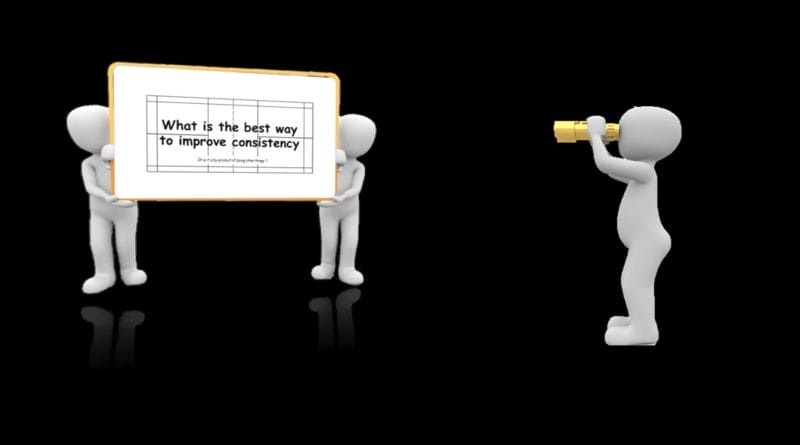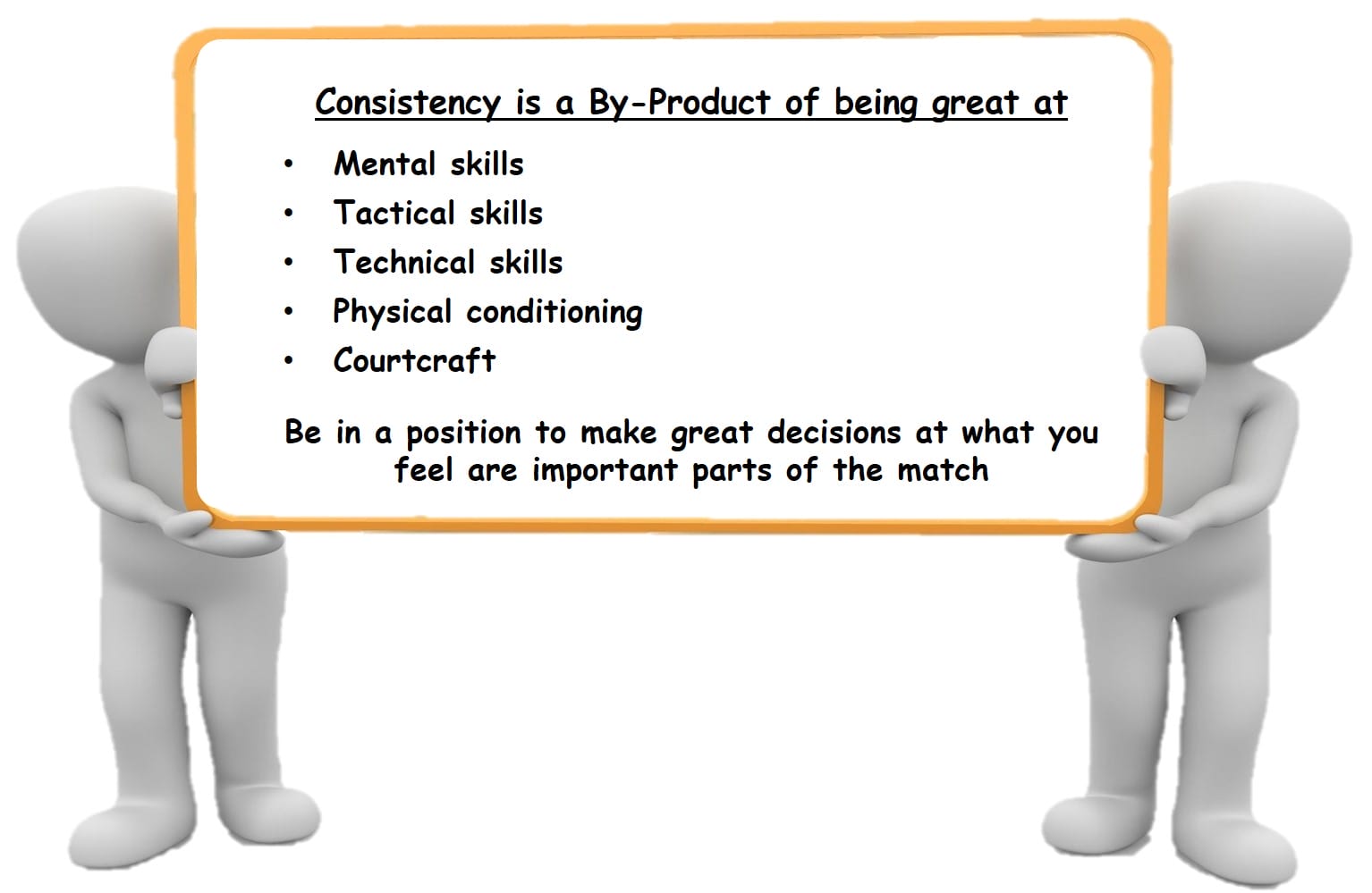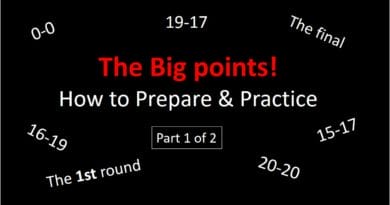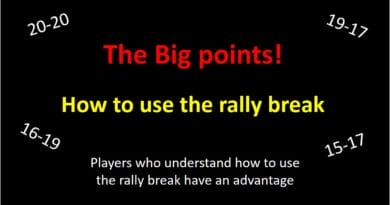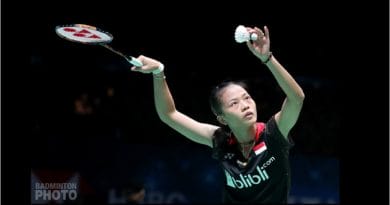17. The never ending search for consistency
I didn’t understand what consistency was … maybe I still don’t
Is consistency in a competitive match different to practice consistency?
How to practice and develop consistency?
That was both my goal and my confusion
(oh and can it be measured?)

This post is the shorter summary of my journey over 10 yrs of trying to work out what consistency really means and all the different aspects that can affect it. It will take about 3 mins to read.
If you are interested in a longer read click on the image.
It will give you more background and lots more to think about.
– – – – – – – – – – – – –
How it started
I would sit and watch players in a match, lots of matches. Players aged 13-16 who had been training for several years. Some of them I’d seen in practice and knew how good they were technically. They could reproduce near-perfect repetitions in routines and single shuttle multi’s.
However, in matches even these technically great players would make mistakes in situations that seemed to be easy or something they had practised for hours before. The coaches I knew called them “simple mistakes” or would say “ah that’s due to a lack of consistency.
Coaches and players would say that they were working on “consistency” in training. However, I was never really sure what they meant and what their practice looked like.
The issue
I don’t think that we (the coaches I knew) expected perfection. But if players could complete sets of 20 shots over the net in say a drop net routine then why would it not go over in a 5 shot match rally.
We also could also see returns to high serves being hit out the side or into the net, sometimes 2 in a row. It was just 1 shot and all it needed was to be hit into the court!
The ‘easiest’ shots were often hit out or in the net, but they didn’t do it in practice … why?
What did I try next
I spoke to the coaches who I knew and looked around at what others were doing.
The advice for practice seemed to be:
- increase the repetitions: start with 10 or 20 and maybe progress to as high as 30 or even 40 (the goal seemed to be ‘more is better’)
- reduce the movements: make that initially very simple and predictable (take away decision they said)
- check the players’ technique – inconsistency is a technique issue (they said)
- include ‘pressure’ by using penalties and forfeits (just losing a rally isn’t a big enough punishment they said)
I didn’t understand all the advice or why it would work
That’s what they did so I just copied, hoping for improvements
The problem
- I didn’t understand how to measure any changes in Consistency in competition, not practice.
- I didn’t understand how psychosocial and physical changes impacted consistency
- I didn’t understand the effect of Technical issues on consistency
- I didn’t understand that numbers/repetitions weren’t the key to constituency success
All these and more are discussed in the longer post,
click here to read it now
What happened next
Nothing much changed in competition, BUT there was a big change in practice
The players could now hit 20 shots or more in a row (over and in) with ‘good technique’. They knew the format of the routines, the multi-sessions, the practices. They felt less pressure. They didn’t even mind the penalties!
But in competition, they still hit ‘easy’ shots into the net or out the side of the court at times when I felt it wasn’t too difficult to just get it over.
Worryingly for me, the return of service errors (into the net or out the side) still happened at times when they made a big difference to the match.
Maybe I was expecting too much, too quickly
so I decided to wait and keep working
The solution
That didn’t come until years later, unfortunately !!
I’d been talking with other coaches and my mentor, often complaining that my players still weren’t consistent enough. I could list all the things we had worked on, the different patterns, routines, and scenarios. He sat me down and asked me if all these repetitions had worked?
I had to say that it didn’t appear to work in matches but it was working in practice. Practice certainly did look better.
They could play longer rallies or return more single shuttles in a multi-shuttle drill. I thought that ‘no mistakes’ equalled ‘improved consistency’.
I explained that I had been focusing on using either one shuttle practice, routines or multi-drills. I suggested that the players had improved as I could tell that by the ‘quality’ of their strokes. Although I wasn’t sure how to define what quality really meant.
I guess I was describing the technique I could see, the hitting, the movement and of course the reduction of mistakes.
Then he dropped these huge statements
Stop thinking about consistency as a technical issue!
Your players are ok technically, that’s not the problem
and
If your practice doesn’t include the factors found in a match all they will become is better at practice
Do you know what those factors are?
I was given this advice, here is a summary 🙂
- As often as possible, the practice should contain real game-like factors that challenge players.
- Think about consistency as a mindset, “players need the ability to make a clear decision when they need to”
- Be aware that any underlying technical issues will often show themselves when under pressure (physically, mentally, tactically) and this isn’t a lack of consistency, it’s a technical issue.
- We should accept errors, but strive to reduce those crucial errors that make a difference in a match.
- Consistency isn’t aiming for 100% perfection. It is the ability not to make mistakes on the important points or those parts of the game that you decide matter.
- Just hitting more reps in practice and making practices simpler isn’t the key to changing match performance
For more advice why not read the longer story post
If this post has left you still wondering and looking for answers
Then welcome to my world !
The truth is that there is no one special routine or practice to improve consistency
My best advice is ….
Developing consistency is similar to helping players with their Tactics and Mental skills,
it’s not the same as working on improving their Technical skills

